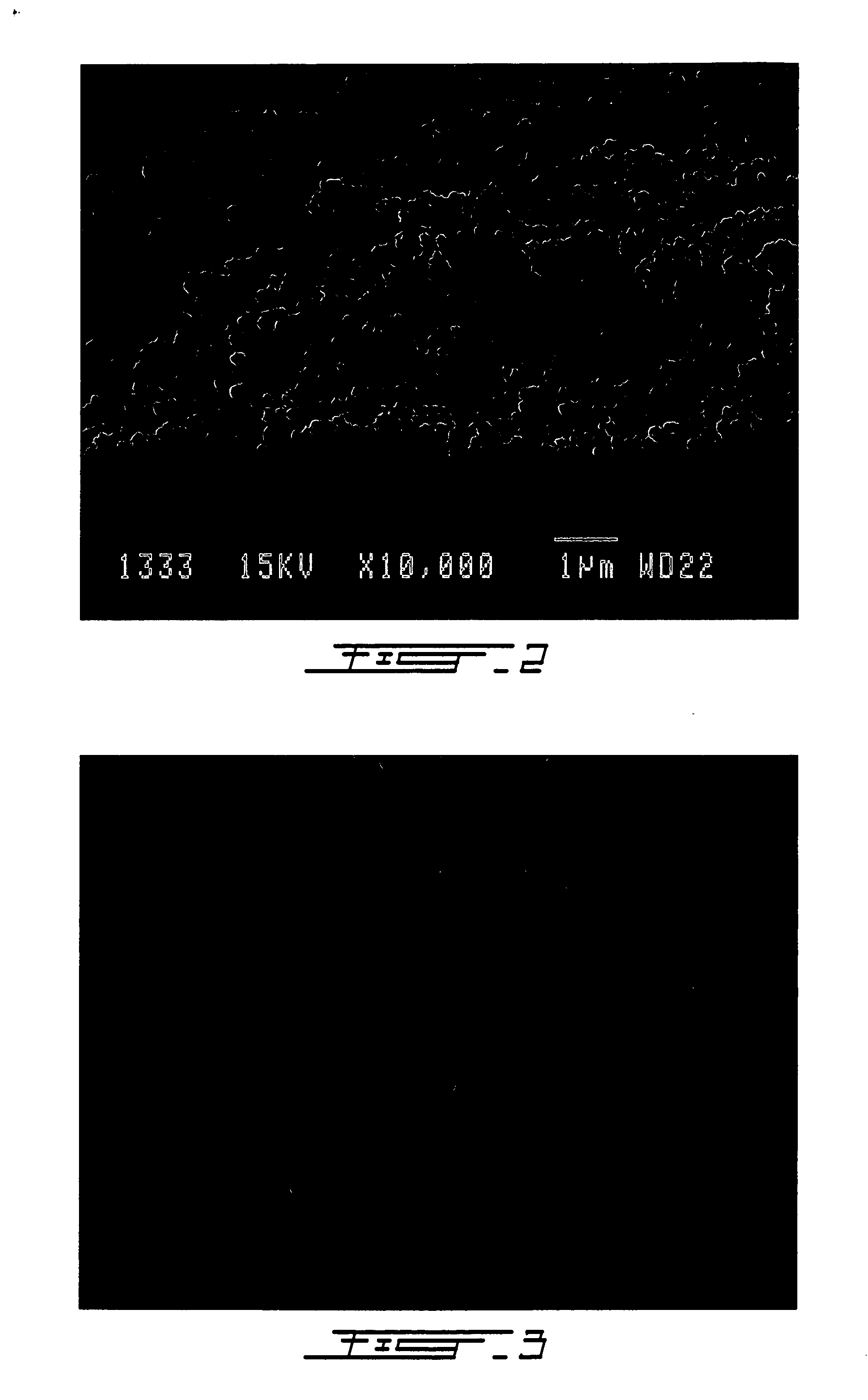Solvent resistant asymmetric integrally skinned membranes
- Summary
- Abstract
- Description
- Claims
- Application Information
AI Technical Summary
Benefits of technology
Problems solved by technology
Method used
Image
Examples
examples
[0077] The following examples describe how to prepare the polyamic acid casting solutions, the capillary tubes and the membranes of the invention.
CASTING SOLUTIONS
Casting Solution A
[0078] A 19% by weight solution of a polyamic acid (PM) was prepared from 4,4′-diaminodiphenyl ether (ODA) and benzophenone tetracarboxylic dianhydride (BTDA) in N-methylpyrrolidone (NMP) solvent. A solution containing 50% by weight of polyvinylpyrrolidone (PVP) in NMP was added to the PM solution. Then glycerol and NMP were added to the solution. The final solution had a composition of PAA / PVP / GLY / NMP of 13 / 1 / 17 / 69 by weight. The solution was mixed for a period of about 12 hours prior to casting.
Casting Solution B
[0079] This solution was prepared according to the same protocole as mentioned above for the casting solution A with the exception that the proportions were different in order to provide a final composition having a PAA / PVP / GLY / NMP composition of 12 / 1 / 20 / 67 by weight.
Casting Solution C ...
experiment 1
[0119] Membrane A was then tested with a vaporous feed stream of 22 wt % water, 68 wt % ethanol and 10 wt % fusel oil at 140° C. Feed was to the bore side of the capillary tube. The permeate pressure was maintained at 4.5 kPa by a vacuum pump downstream of a water cooled permeate condenser. The feed pressure was maintained at 200 kPa and there was negligible pressure drop across the membrane module. The results are given in Tables 2 and 3.
experiment 2
[0120] Membrane B was then tested with a vaporous feed stream of 95 wt % water and 5 wt % acetic acid at 95° C. Feed was to the bore side of the capillary tube. The permeate pressure was maintained at 7.5 kPa by a vacuum pump downstream of water cooled condenser. The feed pressure was maintained at 24 kPa by a vacuum pump downstream of water cooled retentate. The results are given in Tables 2, 3 and 5.
PUM
| Property | Measurement | Unit |
|---|---|---|
| Temperature | aaaaa | aaaaa |
| Temperature | aaaaa | aaaaa |
| Temperature | aaaaa | aaaaa |
Abstract
Description
Claims
Application Information
 Login to View More
Login to View More - R&D
- Intellectual Property
- Life Sciences
- Materials
- Tech Scout
- Unparalleled Data Quality
- Higher Quality Content
- 60% Fewer Hallucinations
Browse by: Latest US Patents, China's latest patents, Technical Efficacy Thesaurus, Application Domain, Technology Topic, Popular Technical Reports.
© 2025 PatSnap. All rights reserved.Legal|Privacy policy|Modern Slavery Act Transparency Statement|Sitemap|About US| Contact US: help@patsnap.com



